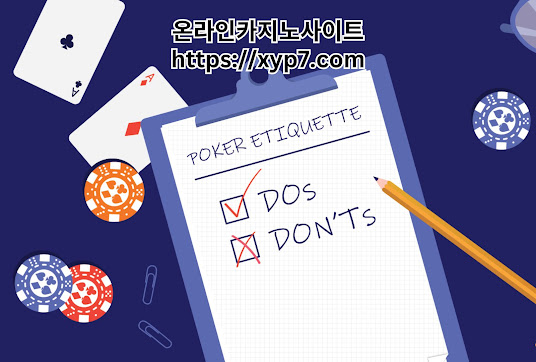The Unwritten Rules of Poker
Poker is a game where both luck and skill are required. Having a good understanding of the unwritten rules of the game can improve the game for everyone at the table. 온라인카지노사이트
Never talk when your turn is not on. This can distract players and give away information. It is also considered poor etiquette.
Rules
Generally speaking, poker etiquette involves respecting other players at the table. This includes not talking while they’re playing and avoiding slow rolling. Slow rolling is an unethical tactic that can cause other players to lose the game. It also gives away information that can be used against them.
Another unspoken rule is to avoid arguing with other players. This is important because it could ruin the mood at the table and make everyone uncomfortable. It is also not a good idea to insult your opponents or discuss their mistakes with them.
In addition, poker can teach people how to make financial decisions under pressure. It also teaches them how to consider risk and reward, which is an essential skill in business and life. Finally, it can help improve a player’s focus and concentration skills. It can even improve their health by reducing stress levels.
Variations
While most people think of Texas Hold’em when they hear the word poker, there are countless other variations to the game that have made it even more popular. These include Omaha and Stud, as well as Draw and Mixed Games. 카지노사이트
In the game of poker, players compete to make the best five-card hand possible. They place chips into the pot to indicate their wagers. When one player has the highest hand, he wins the pot. This process is repeated for each round of betting.
Another variation of the game is Badugi, which is similar to Texas Hold ’em and Omaha, but with a different set of rules. In this game, players have four hole cards and five community cards to construct a poker hand. The game also has a fixed limit. This means that you can’t get away with bluffing the same way as you can in other poker formats. This brings out a much more strategic element to the game.
Betting intervals
In most poker games there are a number of betting intervals, called "rounds," during which each player vies with the other players for the pot. Each player must put a certain number of chips into the pot, or "call" if their turn comes before the next player puts in more chips. They can also raise, or even drop (dropping means they put no chips into the pot and lose their hand).
Before the cards are dealt, the rules of the variant being played may require each player to make a contribution to the pot, called an ante. During each betting interval, one player, designated by the rules of the variant being played, makes the first bet. Each player then must either call or raise the bet.
During each betting interval, no player may raise by more than a specified limit, which varies according to the phase of the game. For example, in fixed-limit draw poker a player's maximum bet may be two chips before the draw and four chips after.
Bluffing
In poker, bluffing is an important part of the game. It adds to the excitement and is a great way to make money. But it is important to be able to judge your opponent’s bluffing intentions. If you are not careful, you could be caught out and lose a big pot.
A good place to start is with your opponent’s body language. If they seem uncomfortable or are touching their face, they may be bluffing. You should also pay attention to their bet amount. If they are raising small bets in the early stages of a hand, they could be bluffing.
It’s also a good idea to consider your opponent’s recent history. If they’ve recently won a big pot, they might be more likely to call bluffs in the future. However, if they’ve been hammered in previous hands, they’ll probably be tighter and not as willing to make risky calls. This makes them a good target for your bluffs. 바카라사이트

.jpg)

Comments
Post a Comment